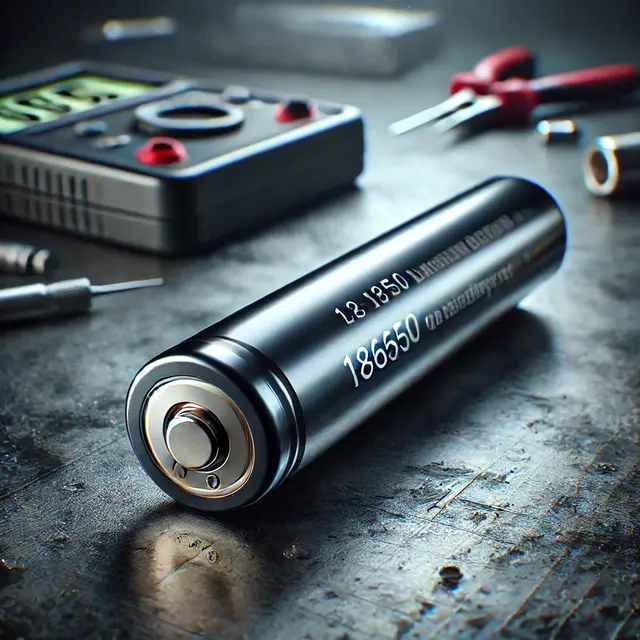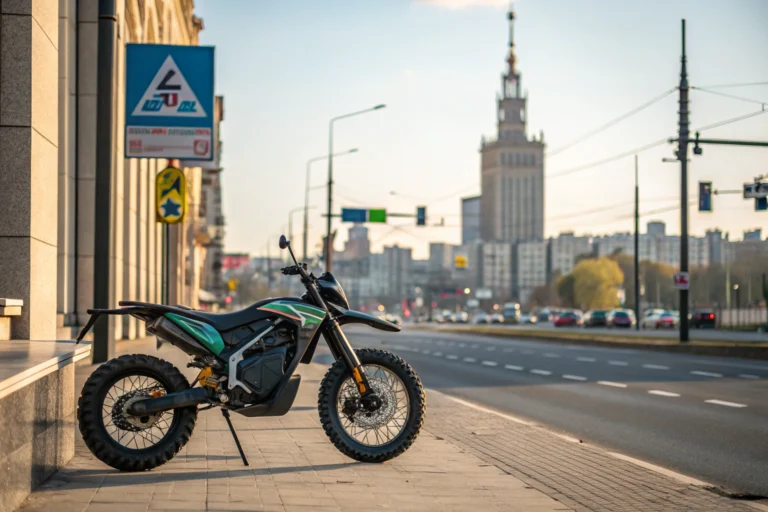18650 battery – Where’s the Plus? A Comprehensive Guide to Construction, Operation and Safety

7 March 2025

Key findings
- Most branded cells have '+' and '-' printed on the case.
- The positive pole is usually convex, while the negative pole is flat.
- On some models the markings are on the label, while on others they are stamped on the metal.
18650 batteries are popular lithium-ion cells used in torches, powerbanks, power tools and electric vehicles. In order to use them safely, it is useful to know how to determine the polarity correctly and avoid the risk of damaging your equipment.
➕ Where is the Plus in the 18650 battery?
1. How do you identify positive and negative poles?
The correct connection of the 18650 battery is crucial for the safety and operation of the device. The positive (+) and negative (-) poles can be identified in several ways:
Manufacturer’s standard designations
- Most branded cells have ‘+’ and ‘-‘ printed on the housing.
- The positive pole is usually convex, while the negative pole is flat.
- On some models the markings are on the label, while on others they are embossed on the metal.
Differences in the design of the positive and negative poles
- The positive terminal is located at the narrower end of the battery and is slightly convex.
- The negative pole is flat and a metal border is often visible around it.
2. do all 18650 batteries have the same markings?
Not all cells are identical in terms of markings and construction, which can lead to confusion.
Differences between branded and non-original Chinese cells
- Reputable manufacturers such as Sony, Samsung, LG, Panasonic use clear polarity markings.
- Cheap Chinese cells may lack clear markings or have a non-standard design that makes identification difficult.
Secured and unsecured models
- Protected cells have additional electronics to protect against overcharging and short-circuiting. They are slightly longer (approximately 2 mm) than standard cells.
- Unprotected cells do not have this protection, making them more susceptible to damage in the event of misconnection.
⚠ Safety and correct connection
3. what happens if you connect the battery in reverse?
Connecting an 18650 battery in reverse can lead to serious consequences, both for the cell and the device in which it is used.
Possible consequences of a faulty connection
- Damage to the electronics of the device if it does not have reverse polarity protection.
- Overheating and damage to the battery itself.
- In extreme cases, a short circuit and uncontrolled energy discharge can occur.
Short circuit hazards
- A short circuit can lead to a rapid rise in temperature, increasing the risk of explosion.
- In some cases, toxic gases may be emitted or the cell may ignite.
4. how to use and store 18650 batteries safely?
To avoid problems, it is important to follow some basic rules regarding the use and storage of 18650 cells.
Correct charging and storage
- Use dedicated chargers – some devices may not have adequate protection.
- Do not charge batteries unattended – avoid charging at night or leaving batteries on the charger for long periods after charging.
- Store at room temperature – avoid exposing cells to extreme temperatures.
How to avoid overheating and explosions?
- Do not damage the insulation – if the battery’s heat shrink cover is damaged, it should be replaced.
- Avoid overcharging and over -discharge – over-discharge can shorten the life of the cell and overcharging can lead to overheating.
- Do not carry cells loose in your pocket – keys or coins can cause a short circuit.
🔄 Charging and Operating 18650 Batteries
5. How to charge 18650 batteries correctly?
Proper charging of 18650 batteries is crucial to their longevity and safety. Inappropriate operation can lead to overheating, faster wear and tear and, in extreme cases, even damage to the cell.
Which chargers are the best?
- Voltage and current control chargers – should have built-in protection against overcharging and over-discharge.
- Smart chargers – e.g. Nitecore, XTAR, Liitokala, which automatically adapt the charging current to the state of the cell.
- Voltage-controlled USB chargers – useful for travel, but should only be used with high-quality cells.
Charging time and impact on service life
- The standard charging time for a 2500-3500 mAh 18650 battery is 3-6 hours at 0.5A-1A current.
- Fast charging (2A and more) can shorten the life of the cell if used regularly.
- Don’t leave batteries fully charged for long – the ideal level for storage is 40-60% charge.
6. how long does the 18650 battery last?
The service life of an 18650 cell depends on many factors, such as capacity, quality and use.
Battery life cycle
- The typical life cycle of an 18650 battery is between 300 and 500 full charge and discharge cycles.
- Branded cells (Samsung, LG, Panasonic) can last up to 1,000 cycles with proper use.
- Once the battery exceeds 80% cycle life, it begins to lose capacity and holds energy for less time.
Factors influencing cell degradation
- Overheating – high temperatures (>50°C) accelerate the ageing of the cell.
- Deep discharge – a voltage below 2.5V can permanently damage the cell.
- Excessively high charging and discharging currents – cause more heat build-up and faster degradation.
- Long storage in a fully charged state – leads to a gradual decrease in capacity.
♻ Recycling and Ecology
7. what to do with a used 18650 battery?
Used 18650 batteries contain heavy metals and chemicals that can harm the environment. Therefore, they must not be disposed of in the regular bin!
Where to recycle batteries?
- Collection points for electro-waste in electronic shops and markets.
- Special battery bins in shopping malls and offices.
- Local PSZOKs (Selective municipal waste collection points).
Why can’t they be disposed of in the regular bin?
- They contain toxic substances that can seep into the soil and groundwater.
- Risk of spontaneous combustion – damaged cells can catch fire or explode.
- Metals can be recovered – recycling allows lithium, nickel and cobalt to be reused, reducing the need for raw material extraction.
By taking care of the proper charging, operation and disposal of 18650 batteries, you can significantly extend their life and reduce the negative impact on the environment. It is advisable to choose reliable sources of purchase, such as CityLion.co.uk, where you will find high-quality cells and accessories for their safe use.

I have been co-creating City Lion since December 2019 and have been involved with electric vehicles since 2013. My mission is to support the development of electromobility, which will help free the world from emissions, pollution, and noise. Feel free to contact me via LinkedIn.



